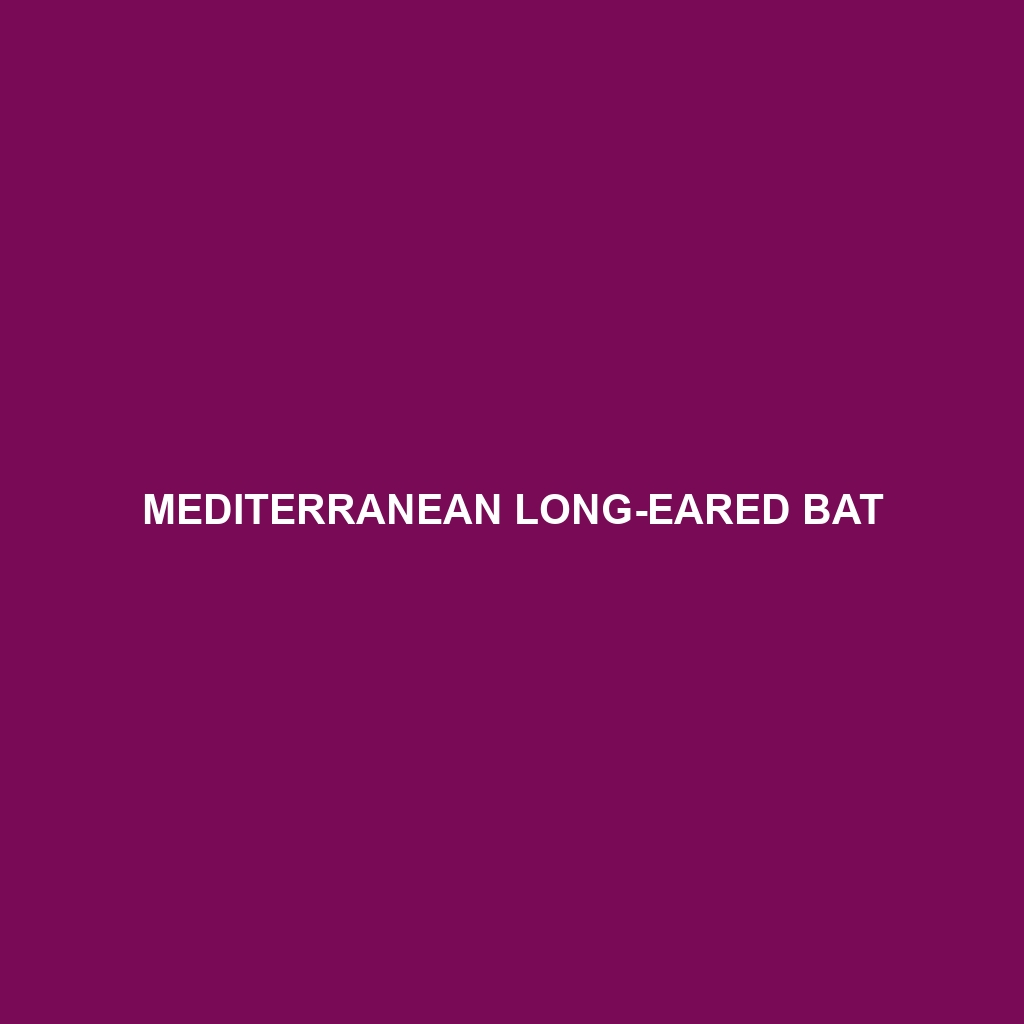Mediterranean Long-eared Bat
Common Name: Mediterranean Long-eared Bat
Scientific Name: Otonycteris hemprichii
Habitat
The Mediterranean Long-eared Bat is primarily found in diverse habitats across Southern Europe, North Africa, and parts of the Middle East. This bat species thrives in a variety of environments, including forests, woodlands, and rocky areas, often choosing habitats near water sources. It is commonly spotted in regions with ample vegetation that provides suitable roosting sites.
Physical Characteristics
The Mediterranean Long-eared Bat is characterized by its relatively small size, reaching a wingspan of approximately 30 to 34 centimeters. The fur is typically a mix of brown and grey, with paler underparts. One of its distinctive features includes large, elongated ears, which can measure up to 40 millimeters, playing a crucial role in its echolocation capabilities. Its unique ear structure not only aids in hunting but also sets it apart from other bat species.
Behavior
This bat is primarily nocturnal, exhibiting behaviors such as foraging for food at dusk. Mediterranean Long-eared Bats are known for their agile flight patterns and have been observed flying low to the ground when hunting. They often roost in social groups, which can enhance thermoregulation among individuals. During the day, they typically seek refuge in tree hollows, caves, or man-made structures.
Diet
Dietary habits of the Mediterranean Long-eared Bat mainly consist of insects, particularly moths and beetles. These bats are insectivorous hunters and utilize their advanced echolocation skills to navigate and find prey in complete darkness. The consumption of flying insects contributes significantly to controlling their populations, making them an essential part of the food web.
Reproduction
The breeding season for the Mediterranean Long-eared Bat occurs typically in late spring, with females giving birth to one or two pups each season. The pups are born hairless and dependent on their mothers for warmth and nourishment. After about four weeks, the young bats begin to fly and can be seen foraging with their mothers. Maternal care is vital for the survival and development of the offspring.
Conservation Status
According to the IUCN Red List, the Mediterranean Long-eared Bat is currently classified as “Vulnerable.” Key threats include habitat destruction, disturbance at roost sites, and climate change. Conservation efforts are crucial to ensuring the survival of this species and maintaining its habitat.
Interesting Facts
One fascinating aspect of the Mediterranean Long-eared Bat is its ability to adapt to urban environments, allowing it to thrive in areas where natural habitats are declining. This species plays an important role in folklore and is often regarded as a symbol of biodiversity in Mediterranean regions.
Role in Ecosystem
The Mediterranean Long-eared Bat serves as a natural pest control agent, consuming vast quantities of insects that can become agricultural pests. Its presence also indicates a healthy ecosystem, as bats contribute to pollination and seed dispersal, supporting overall biodiversity within their habitats.
